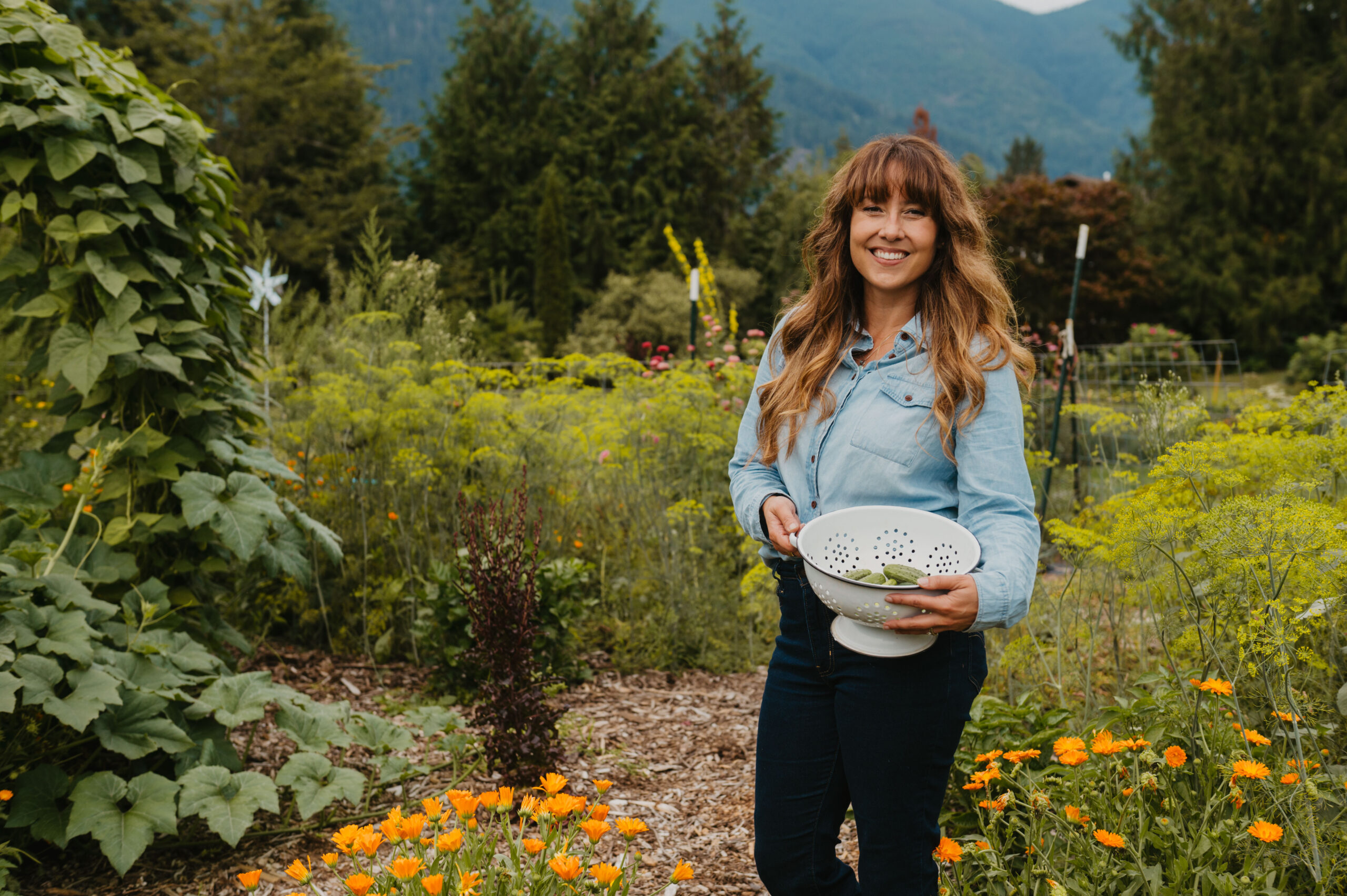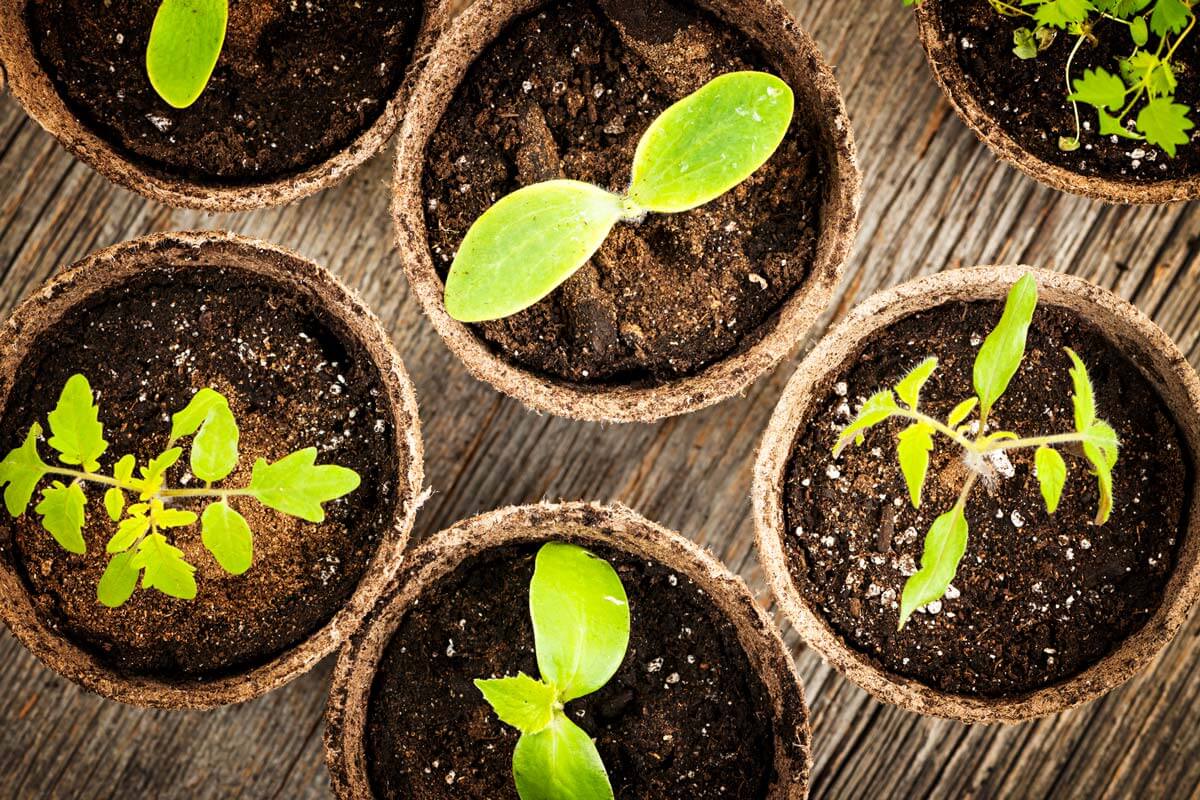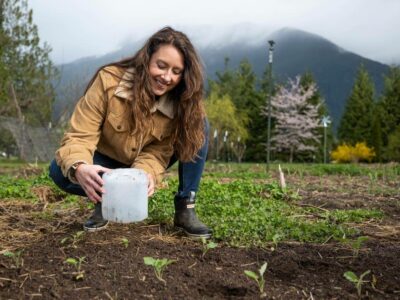When it comes to growing your own food, we have already discussed how to plan your garden and how much to plant per person for a year’s worth of food. But, how much time per week does it take to raise a year’s worth of food or a large vegetable garden with fruit?

In this post, we’ll explore how much time it really takes to raise a year’s worth of food. I often get asked this question, so I wanted to share a glimpse into our lives and how much time we spend growing our vegetable garden each year.
Growing a year’s worth of food differs depending on your family size, the ages of your children, your gardening experience, your food preferences, etc. I’m sharing the time spent for our family of four to give you a reference.
For further context, we raised 100% of our own meat and over 50% of our fruits and vegetables for that year. A good portion of the fruits and vegetables we produce is enough to take us through the entire year, and eat them fresh in season.
Listen to the full podcast Episode #174 – How Much Time Per Week to Raise a Year’s Worth of Food, of the Pioneering Today Podcast, where we don’t just inspire you, but give you the clear steps to create the homegrown garden, pantry, kitchen and life you want for your family and homestead.
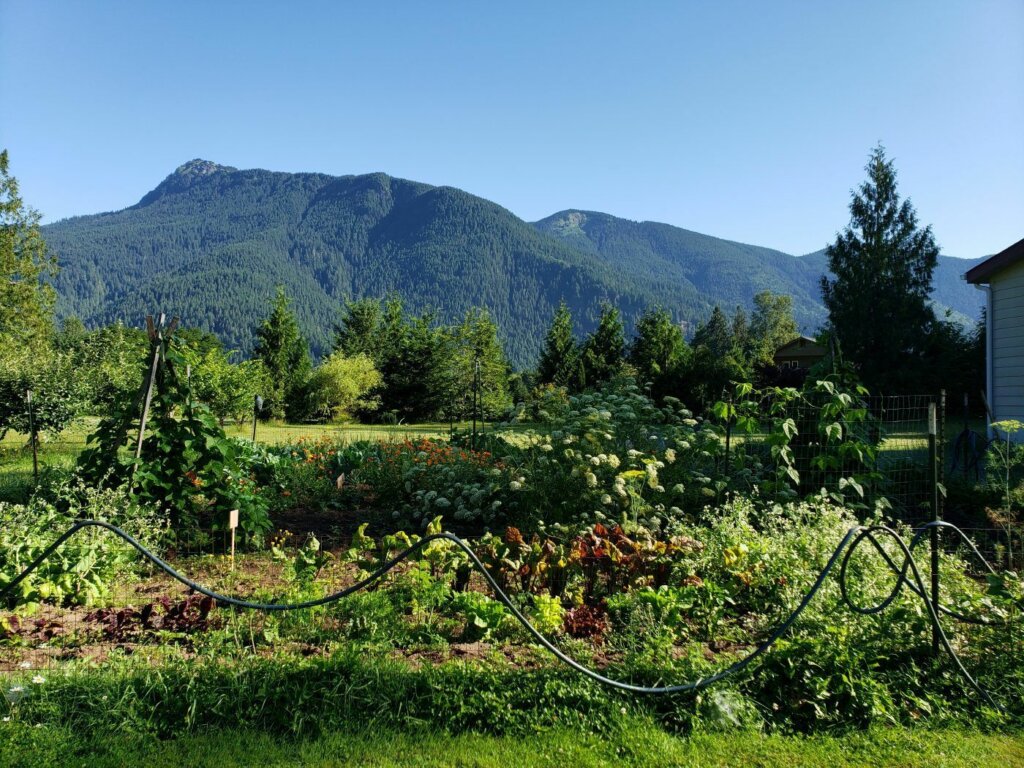
Is Growing Your Own Food Realistic?
One of my favorite things to talk about is growing and raising your own food because it has so many benefits. Not only does gardening save money, but it has also changed my health.
Growing as much of our own food as possible is one of the reasons I have been able to go off prescription medications and heal my stomach ulcers and acid.
I know it has changed my health, as well as the health of thousands of people through my books and those who are inside the Pioneering Today Academy. I have seen firsthand how it can change their health and the health of their families as well.
When considering the benefits, the question should be, “Is not growing your own food realistic?” The benefits of growing your own food are numerous, and from this perspective, the time invested really seems insignificant.
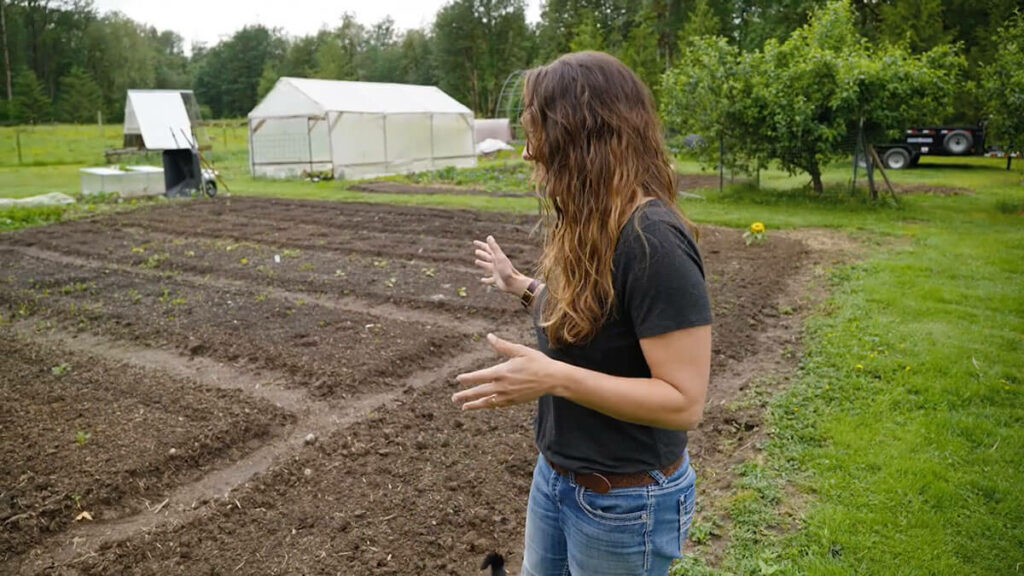
Time Investments to Grow Your Own Produce
On average, we spend 2 hours a week on our established vegetable garden and fruit-bearing bushes and trees. Notice that I say “established” and “on average.” Depending on the scale of your garden, the initial infrastructure will take more time, but you do that just once, and it’s done.
Additionally, I don’t do much during the winter months, so I’m lucky if I put in 2 hours a month from November through January. Come Spring, I’ll have a few dedicated weekends to my perennial beds and herbs that will take more than two hours, so it all averages out over the year.
I have developed a full series that breaks down each gardening task by month. You can check them out here:
- Gardening in January
- Gardening in February
- Gardening in March
- Gardening in April
- Gardening in May
- Gardening in June
- Gardening in July
- Gardening in August
- Gardening in September
- Gardening in October
- Gardening in November
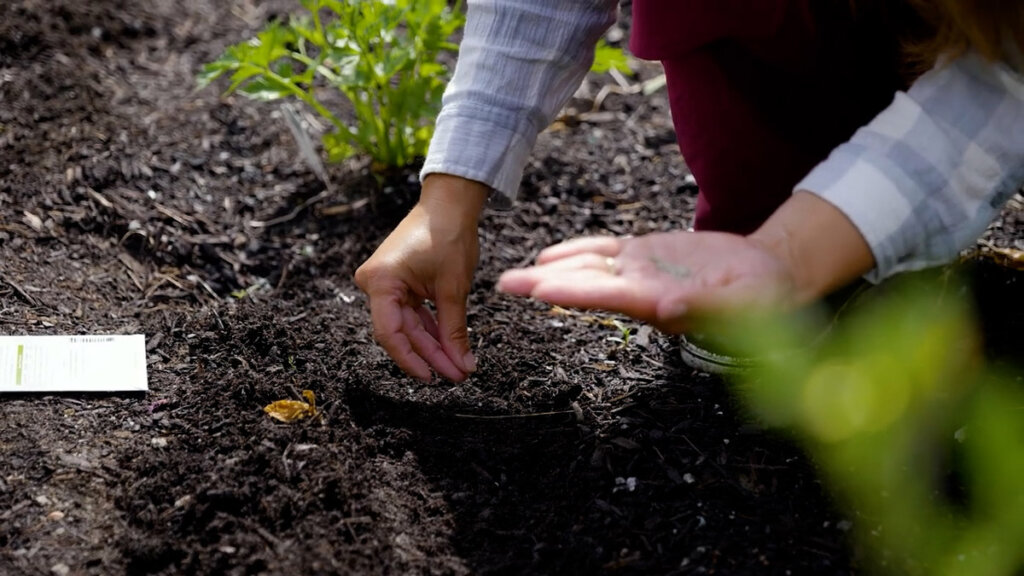
Which Tasks Take the Most Time
Certain tasks and areas will definitely take more or less time than others. For instance, breaking ground and putting in new garden beds will take much more of your time than once your garden beds are established.
Starting seeds, however, takes a lot less time than other gardening tasks. In the spring, it often takes just a few minutes a day to plant the seeds, turn your grow lights on and off, and keep them watered.
Once they’re ready to be hardened off, you’ll need a few more minutes each day. Most of the time at this stage is just waiting time. Direct sowing seeds outdoors usually takes us about three to four hours, which we tend to do all in one day.
Of course, those weeks and during those times are more involved and require more time commitment. But once everything is in, you’ll save yourself so much time if you just do the work up front and do it right.

Making the Most of Your Time in the Garden
I do my best to set up my garden so that it will grow and produce without a lot of hands-on management when at all possible. This can be more work when you’re just getting started, but it gets easier to manage as time goes on.
If you need help setting up your garden to work efficiently, follow my basic steps for starting a vegetable garden. My time-saving gardening tips are another great resource to help you make the most of the time you invest in your garden.
And that’s it! That’s all it takes to grow a year’s worth of tomatoes, lettuce, cucumbers, butternut squash, acorn squash, spaghetti squash, Brussels sprouts, Kale, carrots, beets, radishes, onions, you name it.
And if you think about it, if you were to just go to the grocery store every week, by the time you add up your drive time, parking, the time spent shopping, standing in line waiting to pay, coming home, etc. you’re probably spending more than two hours a week just going and buying those things from the store.
Resources
- How to Start Seeds Indoors
- How to Prune Perennials
- Verse of the Week – Ephesians 4:1
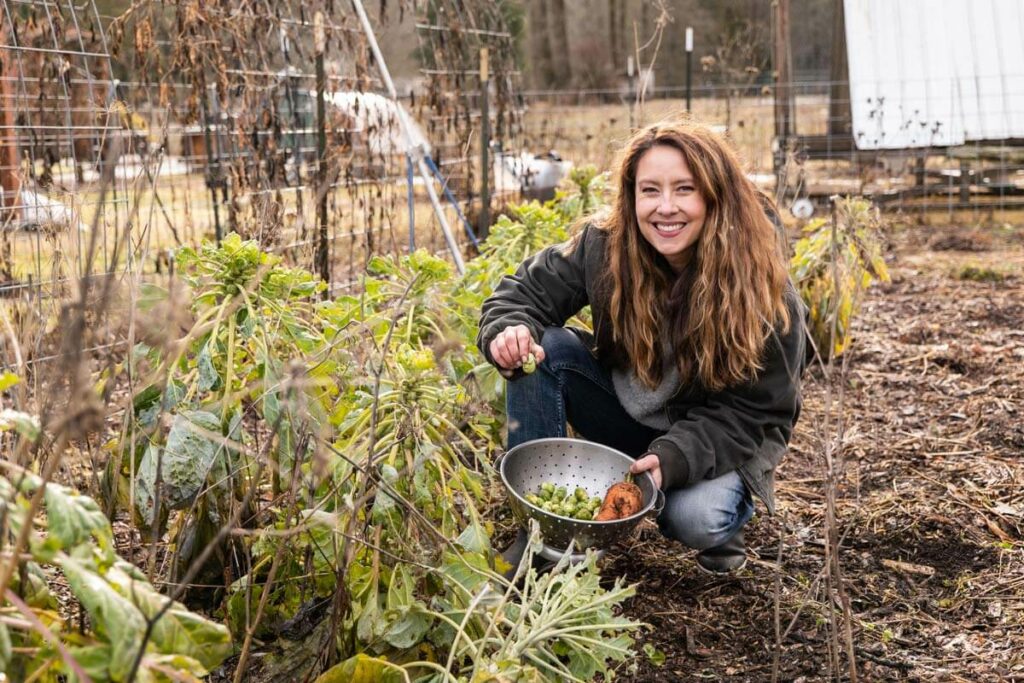
Other Posts You May Enjoy
- How to Plan Your Best Garden & Harvest for a Year’s Worth of Food
- How Much to Plant Per Person for a Year’s Worth of Food
- Grow Your Own Food – Helpful Tips For The Beginning Gardener
- 13 Basic Steps to Starting a Vegetable Garden
- Time-Saving Tips For New Gardens
- Does Gardening Save Money
- Survival Garden
